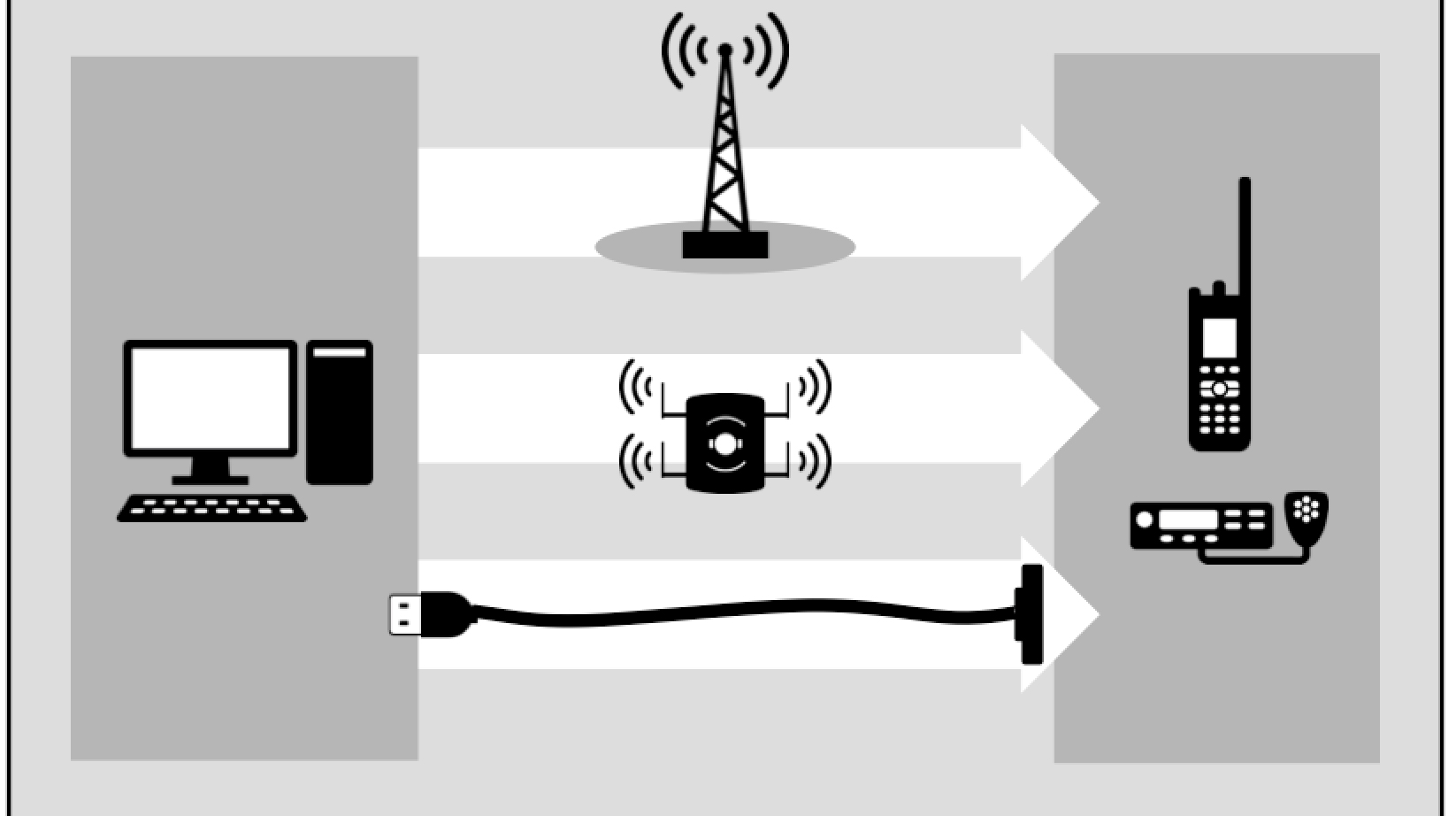Today, countless public safety professionals and others seen and unseen are confronting the challenges brought on by the COVID-19 pandemic. While crises come in all different shapes and sizes for public safety leaders to tackle, this pandemic has reached hometowns across our nation and has created a new and heightened level of uncertainty. The lessons learned from the crises faced in the past can provide our leaders of today a checklist that will prepare them for success tomorrow.
While there is much a public safety leader can do before a crisis occurs to prepare his or her agency, the in-the-moment nature of our lives lends itself to the majority of crisis leadership focused on what we can do during or directly after a crisis has occurred. While there are exceptions, particularly for professionals who work in emergency management, most public safety officials find themselves in more of a response mode. It is this group of officials that is the target audience for this post. Since the use of checklists has been demonstrated to dramatically increase performance and improve safety, the following five questions can be used by a leader in times of crisis to help reduce the impact of the calamity within their jurisdictions.
Do you understand the problem?
There is a maxim that states that when it comes to homeland security, “intelligence is about first understanding the problem, and really good intelligence is about being able to do something about those problems” once clearly understood. If your jurisdiction routinely faces natural disasters such as wildfires, hurricanes, tornadoes, or earthquakes then an understanding of that problem may be routine. However, in the case of responding to the COVID-19 pandemic, most public safety leaders were unaware of the intricacies surrounding this type of crisis. For example, in a natural disaster people may coalesce to form a human chain loading sandbags onto a truck. In this pandemic, the rallying cry has been just the opposite – stay at home and maintain a social distance.
Despite the lack of understanding we may have on a complex issue at a given moment, there are enough accessible resources that can help quickly raise the knowledge level of a leader about the problem they face. It may not be just about learning how to “connect the dots”, but also how to synthesize knowledge about a particular crisis problem with the understanding that an official has about their own jurisdiction. For example, as it relates to COVID-19, because of the “newness” of this threat there is no frame of reference for both public safety professionals and the public to know what to expect. While individuals in areas routinely impacted by hurricanes know what to expect: flooding, property damage, and power outages, when it comes to a new threat like COVID-19 there is a level of uncertainty about this invisible enemy. Therefore, the coping mechanisms by the people being served and those doing the serving may run the gamut from resourcing to scheduling. The more a leader knows about the issue the more he or she can communicate and assuage the fears of those that are in need of leadership during these trying times.
Have you considered second and third order effects?
What often makes crises so impactful to a jurisdiction is not just the event itself but what follows, particularly when critical infrastructure and supply chains are disrupted. During Hurricane Sandy, the power outages brought on by the tidal surge in the New York/New Jersey metropolitan area impacted the power generating stations. This led to local gas stations being unable to pump fuel from their storage tanks, which turned into enormous gas lines and public disorder situations for the local law enforcement personnel to address. Additionally, public policy decisions aimed at reducing risk or additional loads on social systems may give rise to unforeseen or unplanned consequences for law enforcement to contend with. While implications are always present when public policies are advanced, during times of crisis the impact, both good and bad, can be increased exponentially.
Who and what is essential?
While we all recognize that the front-line heroes of this current pandemic are our medical community and first responders, we should also recognize the “underground heroes” of people in our supply chain. These heroes include producers, packers, shippers, loaders, drivers, unloaders, shelf stockers and cashiers. Many of them are exposing themselves and performing “without a net.” While we understand the intrinsic value of these individuals for advancing the supply chain so we can all eat, there is still a tendency in public safety organizations during times of crisis to prioritize their agency personnel based on whether they serve on the front line. Having this parochial view can reduce an agency’s capabilities for addressing a crisis.
Mike Rowe, the legendary television host and narrator, was recently interviewed about the topic of “essential personnel” during the COVID-19 containment. He quipped that while a plumber may not make the list of essential personnel granted access to work, it would not take long before the value of this service provider would clearly present itself as plumbing issues began to surface and back up. For the public safety leader faced with a crisis, it is critical that when making the determination of what personnel are essential, they think through the implications of the crisis. In other words, the decision on which personnel are essential should not be limited to whether they are the most visible group that comes to mind. Instead it is critical for leaders to map out what it requires to carry out and sustain their operational and technological capabilities. This exercise can quickly identify why an agency’s information technology, mechanical, and janitorial folks are just as essential as their front-line personnel.
Have you planned for the long term?
A solution that cannot be sustained is no solution at all. The nature of public safety is to respond and address calls for service in an effective and efficient manner. Yet, during steady-state operations, this response can often be achieved in a single tour of duty. However, in times of crisis, the duration of an event can be prolonged exponentially. Planning for the long term requires public safety leaders to step back from a steady-state mindset and shift into thinking about how best to sustain a capability. This may require a more focused thinking about scheduling, lodging and meal arrangements for personnel. Major Douglas Burig of the Pennsylvania State Police once remarked about the Eric Frein fugitive investigation, “while we were used to running hard on homicide investigations, once our personnel hit 36 hours without sleep our effectiveness dropped immensely…forcing us to spend time scheduling in sleep for our personnel, including myself.” His comment clearly underscores the need for public safety leaders thrust into a crisis situation to understand planning for the long-term.
Are you monitoring the morale, health, and well-being of your people?
A huge take away from the response to Hurricane Katrina was that since many public safety personnel were directly impacted by the catastrophe their focus was naturally on their own homes and their families. In that situation, while the law enforcement officers or firefighters may have been healthy, their personal predicament took them away from their work responsibilities. Today, as we face the coronavirus, the stakes are higher. Not only will public safety officials have family members that they are concerned about at home, but they could in fact contaminate – if they are infected – the workplace if they are not careful. While this is not an easy situation to address, the Centers for Disease Control and Prevention has provided guidance that public safety leaders can implement and assess within their workplace. It goes without saying that public safety officials are at greater risk because they must make contact with individuals that may be infected by COVID-19. For the sake of the workplace, the overall mission capabilities, and for reducing the spread of the virus to one’s family, public safety leaders must ensure they are educating, monitoring, and evaluating that morale, health, and well-being of their people, which includes ensuring that personnel are using the right personal protective equipment to reduce the risk of contamination.
Conclusion
The COVID-19 epidemic has created a new set of circumstances for public safety leaders to recognize and address. Most first responders have never found themselves in this situation before, where the amount of uncertainty seems to grow daily as this invisible threat continues to take its toll. Yet, while the crises faced in the past in many jurisdictions are of a different nature, there are lessons to be learned from them that also apply in the face of today’s pandemic. While the checklist questions outlined above are by no means all-inclusive in helping to prepare public safety leaders for performing at their best during a time of crisis, they provide a framework for readiness toward reducing the impact of the crisis within their jurisdiction.
Motorola Solutions is here to provide resources for you and your team in this time of uncertainty please visit our COVID resource site at: https://www.motorolasolutions.com/covid





dave.weisz@comcast.net
April 24, 2020
This is an excellent guide. Please let me add something I learned from another strong leader, My Dad: “If you have fundamental philosophies well ingrained, honestly believed and to which you are deeply committed, then it is not necessary to take each situation you face and re-think the basic guidelines within which you should take action.”